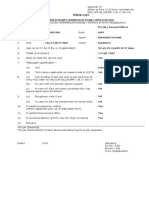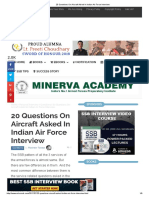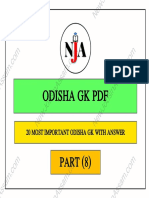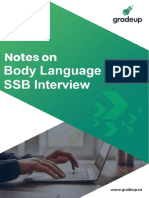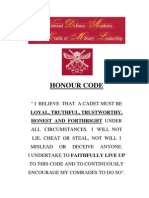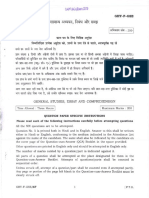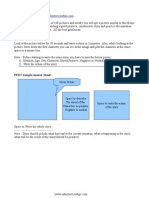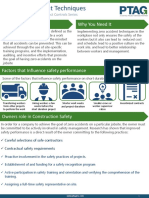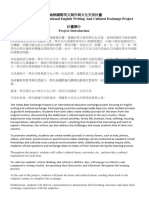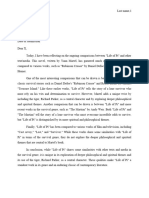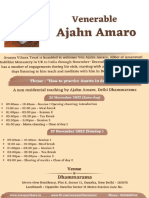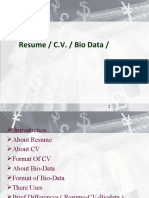0% found this document useful (0 votes)
189 views8 pagesAFSB Picture Perception and Description Test
The document outlines the multi-day process for the Air Force Selection Board (AFSB) interview. It involves several tests and assessments over 5 days to evaluate candidates' mental stability, personality, leadership, decision making, and teamwork skills. Testing includes psychological evaluations, group tasks with obstacles to complete together, speeches, and a personal interview. At the end of day 5, candidates have a board conference to discuss performance, following which results are announced and some candidates are shortlisted for further tests.
Uploaded by
aadi.aryan97Copyright
© © All Rights Reserved
We take content rights seriously. If you suspect this is your content, claim it here.
Available Formats
Download as DOCX, PDF, TXT or read online on Scribd
0% found this document useful (0 votes)
189 views8 pagesAFSB Picture Perception and Description Test
The document outlines the multi-day process for the Air Force Selection Board (AFSB) interview. It involves several tests and assessments over 5 days to evaluate candidates' mental stability, personality, leadership, decision making, and teamwork skills. Testing includes psychological evaluations, group tasks with obstacles to complete together, speeches, and a personal interview. At the end of day 5, candidates have a board conference to discuss performance, following which results are announced and some candidates are shortlisted for further tests.
Uploaded by
aadi.aryan97Copyright
© © All Rights Reserved
We take content rights seriously. If you suspect this is your content, claim it here.
Available Formats
Download as DOCX, PDF, TXT or read online on Scribd
/ 8





